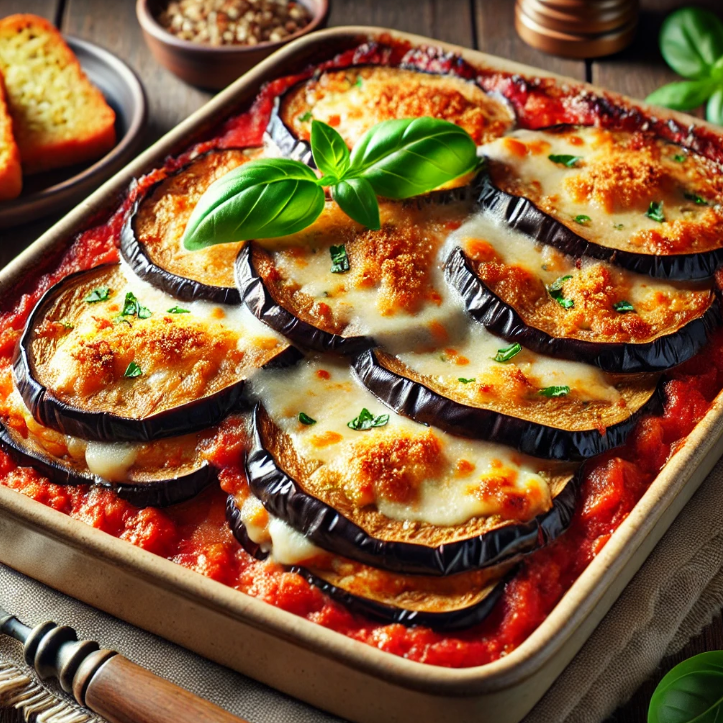When it comes to comfort food, few dishes are as versatile and satisfying as eggplant casserole. This rich, flavorful dish is beloved for its ability to blend hearty ingredients into a warm, baked masterpiece. From cheesy Southern-style casseroles to vegan Mediterranean variations, eggplant casseroles can be customized to suit nearly any palate.
In this article, we’ll explore everything you need to know about making the perfect eggplant casserole. We’ll cover its history, key ingredients, preparation techniques, and even dive into popular variations and health benefits. Whether you’re a seasoned cook or a beginner, this guide will inspire you to get creative with this timeless dish.
Table of Contents
Introduction to Eggplant Casserole
Before diving into recipes and techniques, let’s understand what makes eggplant casserole a standout dish and why it continues to win hearts around the world.
What is Eggplant Casserole?
At its core, eggplant casserole is a baked dish that combines slices or chunks of eggplant with complementary ingredients like cheese, tomatoes, breadcrumbs, and flavorful seasonings. The result is a comforting, layered dish with a balance of creamy, savory, and slightly tangy flavors. It’s often served as a main course or a hearty side dish.
The History of Eggplant in Casserole Dishes
Eggplants have been a staple in Mediterranean and Middle Eastern cuisines for centuries, where they’re often baked, stuffed, or layered with other ingredients. The concept of eggplant casserole likely evolved from these traditional dishes, gaining popularity in Southern American cuisine with rich, cheesy versions. Today, it’s a global favorite, with each culture adding its unique twist.
Why Eggplant Casserole is a Crowd Favorite
What makes eggplant casserole so irresistible is its versatility. It can be made vegetarian, vegan, or loaded with cheese and meat, depending on your preference. Its layers of flavors and textures appeal to everyone, making it a go-to dish for family dinners, potlucks, and even holidays.
Key Ingredients for Eggplant Casserole
Creating a flavorful eggplant casserole starts with choosing the right ingredients. From the star of the dish—the eggplant—to the seasonings and cheeses, every component plays a crucial role in achieving that perfect balance of taste and texture.
Choosing the Best Eggplants
Selecting the right eggplants is essential for a delicious casserole. Look for firm, shiny eggplants with smooth skin and no blemishes. Smaller eggplants tend to have fewer seeds and a milder flavor, making them ideal for a casserole. To reduce bitterness, some cooks recommend salting and draining the eggplant slices before cooking.
Cheeses that Enhance Flavor
Cheese is often the hero of a rich eggplant casserole. Mozzarella adds gooey texture, Parmesan contributes a nutty depth, and ricotta or cream cheese lends creaminess. For those who prefer a sharper flavor, aged cheddar or Gruyère can be a fantastic addition.
Sauces and Seasonings for Depth
Tomato-based sauces are classic in eggplant casseroles, adding a tangy and slightly sweet layer to the dish. Herbs like basil, oregano, and thyme complement the eggplant beautifully. To enhance the savory notes, consider adding garlic, onions, or even a dash of smoked paprika.
Optional Additions for Unique Variations
Want to make your casserole stand out? Try adding ground meat, like beef or turkey, for a heartier version. For a Mediterranean twist, include ingredients like olives, capers, or roasted red peppers. Vegan versions can substitute cheese with nutritional yeast or cashew cream for that signature cheesy flavor.
How to Make the Perfect Eggplant Casserole
Making the perfect eggplant casserole requires a combination of the right techniques and attention to detail. Here’s a step-by-step guide to help you achieve a dish that’s rich in flavor and perfectly textured.
Prepping the Eggplants: Peeling, Slicing, and Salting
Start by peeling the eggplants if you prefer a softer texture, though leaving the skin on adds extra fiber and color. Slice the eggplants into even pieces—either rounds or long strips—to ensure uniform cooking. To reduce bitterness and moisture, sprinkle the slices with salt and let them sit for 20–30 minutes before rinsing and patting dry.
Layering Techniques for Maximum Flavor
Layering is where the magic happens in eggplant casserole. Begin with a thin layer of sauce at the bottom of your baking dish to prevent sticking. Add a layer of eggplant, followed by sauce, cheese, and any optional ingredients. Repeat until all ingredients are used, finishing with a generous topping of cheese for a golden crust.
Baking Tips for the Best Texture
Preheat your oven to 375°F (190°C) and bake the casserole for 30–40 minutes, or until the top is bubbly and golden brown. Cover the dish with foil for the first half of baking to prevent over-browning, then remove it to allow the cheese to crisp up.
How to Serve and Store Eggplant Casserole
Let the casserole cool for 5–10 minutes before serving to allow the layers to set. Serve it as a main dish with a fresh salad or crusty bread, or as a side dish to complement roasted meats. Leftovers can be stored in the fridge for up to three days or frozen for up to three months.
Popular Variations of Eggplant Casserole
There’s no one-size-fits-all when it comes to eggplant casserole. With countless variations, you can easily adapt the dish to suit your taste preferences or dietary needs.
Southern-Style Eggplant Casserole
The Southern take on eggplant casserole is rich and hearty, often featuring a creamy cheese sauce and buttery breadcrumbs. Some versions include ground meat, such as beef or sausage, to make it extra filling. This variation is perfect for those who love indulgent comfort food.
Mediterranean Eggplant and Tomato Bake
This variation highlights the bright, fresh flavors of Mediterranean cuisine. Layers of eggplant, ripe tomatoes, and olive oil are baked with garlic, fresh basil, and crumbled feta cheese. It’s a lighter, more herbaceous take on the classic casserole, perfect for summer dinners.
Vegan and Gluten-Free Eggplant Casserole Options
For those with dietary restrictions, vegan and gluten-free eggplant casseroles are a fantastic option. Use cashew cream or nutritional yeast in place of cheese, and swap breadcrumbs with gluten-free alternatives. Roasted red peppers and zucchini can add depth and texture.
Cheesy Eggplant Parmesan Casserole
Eggplant Parmesan is a beloved dish on its own, but turning it into a casserole adds an extra layer of coziness. Breaded and fried eggplant slices are layered with marinara sauce, mozzarella, and Parmesan cheese, then baked until bubbly. This variation is sure to satisfy cheese lovers.
For more ideas, check out this Eggplant Casserole Recipe for inspiration!
Health Benefits of Eggplant Casserole
Not only is eggplant casserole delicious, but it also offers several health benefits, thanks to its star ingredient and complementary components.
Nutritional Value of Eggplants
Eggplants are low in calories but high in fiber, making them an excellent choice for maintaining a healthy weight. They’re rich in antioxidants, particularly nasunin, which is found in the skin and supports brain health. Additionally, they contain essential vitamins and minerals like vitamin K, vitamin C, and potassium.
How to Make a Healthy Eggplant Casserole
Making a healthier version of eggplant casserole is simple. Opt for baking instead of frying the eggplant slices to reduce oil consumption. Use low-fat cheese or plant-based substitutes, and load up on fresh vegetables like spinach or zucchini for added nutrients.
Eggplant Casserole in a Balanced Diet
Incorporating eggplant casserole into your meals is a great way to enjoy a nutrient-packed dish. It pairs well with lean proteins and whole grains, creating a balanced plate that’s as satisfying as it is nourishing.
FAQs About Eggplant Casserole
Preparing eggplant casserole can raise questions, especially if you’re making it for the first time. Here are answers to some of the most common queries to help you create the perfect dish.
Can I Make It Ahead of Time?
Yes, it is an excellent make-ahead dish. You can assemble it the day before, cover it tightly with plastic wrap or foil, and store it in the refrigerator. When ready to bake, let it come to room temperature for about 30 minutes, then pop it into the oven. This makes it a great option for busy weeknights or entertaining.
How Do I Keep the Eggplant from Becoming Bitter?
Eggplants can sometimes have a slight bitterness, especially larger ones. To avoid this, sprinkle salt over the slices and let them sit for 20–30 minutes. This process, called sweating, draws out the bitterness and excess moisture. Afterward, rinse the slices and pat them dry with a paper towel before cooking.
What Side Dishes Go Well with It?
It pairs beautifully with a variety of side dishes. A fresh green salad, crusty bread, or roasted vegetables are simple yet complementary options. For a heartier meal, serve it alongside grilled chicken or fish.
How Can I Reheat It Without Drying It Out?
To reheat eggplant casserole, cover it with foil to lock in moisture and warm it in a 350°F (175°C) oven for about 20 minutes. If reheating a single portion, the microwave works well, but add a splash of sauce or a sprinkle of cheese to keep it moist.
Tips and Tricks for the Best Eggplant Casserole
Making the perfect eggplant casserole is all about technique and attention to detail. These tips will ensure your casserole is a crowd-pleaser every time.
Using Fresh Ingredients for Better Flavor
Fresh ingredients make all the difference in a dish like it. Choose ripe, firm eggplants and use high-quality cheese, fresh herbs, and a flavorful tomato sauce. Fresh ingredients enhance both the taste and texture of the casserole.
Avoiding Soggy Layers
Nobody likes a soggy casserole! To prevent this, salt the eggplant slices to remove excess moisture and pat them dry before cooking. You can also lightly roast or sauté the slices before layering them in the casserole to keep the dish from becoming too watery.
Customizing the Recipe to Suit Your Taste
One of the best things about it is its versatility. Don’t be afraid to customize the recipe with your favorite ingredients. Add more spices for a bold flavor, incorporate vegetables like zucchini or mushrooms, or experiment with different cheeses to find your perfect combination.
Creative Twists and Customizations
It is a classic dish, but that doesn’t mean you can’t put your own spin on it. With a few creative additions or substitutions, you can transform this dish into something truly unique.
Adding a Spicy Kick
For those who enjoy bold flavors, adding a little heat to your eggplant casserole can make it unforgettable. Mix crushed red pepper flakes or diced jalapeños into the tomato sauce. Alternatively, drizzle a bit of hot sauce over the top before baking for a fiery twist.
Incorporating Global Flavors
Take it on a culinary journey by incorporating ingredients from around the world. Add curry powder and coconut milk for an Indian-inspired version, or layer in pesto and sun-dried tomatoes for an Italian flair. Each variation brings exciting new flavors to a familiar favorite.
Conclusion and Final Thoughts
it isn’t just a dish—it’s an experience. Its versatility, comforting flavors, and adaptability make it a favorite in kitchens around the globe. Whether you prefer a cheesy Southern-style version, a light Mediterranean take, or a vegan alternative, there’s an eggplant casserole for everyone.
By following the tips, techniques, and recipes in this guide, you’ll be well on your way to mastering this classic dish. So grab some fresh eggplants, preheat your oven, and let your creativity shine. You might just discover your new go-to comfort food!
For more delicious ways to prepare it, check out the creative recipes on Allrecipes. From classic baked casseroles to unique variations, you’re sure to find inspiration for your next meal!


